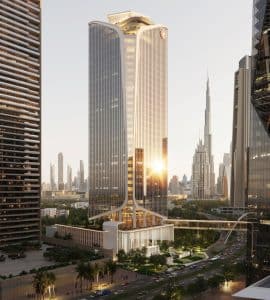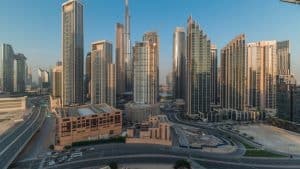Cavendish Maxwell, a leading property consultancy and chartered surveying firm in the Middle East, released its Oman Property Market Report for 2019-2020 comprising key property data and trends for the country’s real estate industry. The industry report was compiled by the firm’s in-house strategic consulting and research team, and covers key data and overviews into the residential, retail, office, industrial, hospitality and entertainment sectors.
Commenting on the report, Aditi Gouri, associate partner, strategic consulting and research at Cavendish Maxwell, said: “Positive indications for the real estate sector, such as high growth in traded value of properties, emerged in 2019 despite Omanisation efforts impacting residential real estate sector demand. However, since the beginning of 2020, Oman’s internal and external environment has changed rapidly. Whilst political stability has prevailed in the Sultanate after the change in power, the government is now increasing focus on the areas of budget deficits, debt and unemployment. At the same time, they will need to navigate the economic environment in the months ahead, which will be governed by the constantly evolving global situation and oil price movements.”
Key market insights
As part of its diversification strategy, Oman is focusing on its tourism industry as a key growth driver of the economy with the aim to boost the share of the sector’s contribution to GDP to 6-10% by 2040. In 2018, tourism contributed 2.9% to Oman’s GDP. Total tourism revenue in Oman stood at OMR 1.4 billion of which inbound tourists contributed 49% at OMR 680 million.
With increasingly more expats leaving Oman due to the government’s Omanisation drive, residential property prices and rents have been impacted. Between December 2018 and December 2019 alone, the total expat population in Oman recorded a year-on-year decline of 2.9%.
Supported by the recovery in oil prices until 2019, Oman’s real estate market recorded a gradual recovery providing more opportunities for buyers and tenants. After recording a steep drop to OMR 2.6 billion in 2017 from OMR 6.6 billion in 2016, traded value of property in Oman improved slightly to OMR 2.7 billion in 2019.
Against the backdrop of the tepid economic environment combined with the Sultanate’s protectionist policies, a number of enterprises have found it difficult to sustain, impacting demand for office space. According to Invest Easy, between 2016 and 2019, the total number of registered enterprises decreased from 38,070 in 2016 to 21,913 enterprises in 2019, recording a negative CAGR of 17%.
Oman’s retail sector is currently witnessing the rapid construction of new malls adding further pressure on the supply side. However, over the longer term, innovative retail concepts and online shopping are expected to drive growth in the sector.
Oman’s hotel capacity has expanded over 80% in less than a decade to build a thriving tourism and hospitality industry. As of December 2019, total hotel occupancy rate in 3–5-star properties was 65.8% versus 66.1% in December 2018, showing a slight decrease. However, revenues rose 6.5% from OMR 25.7 million in December 2018 to OMR 27.4 million December 2019.











